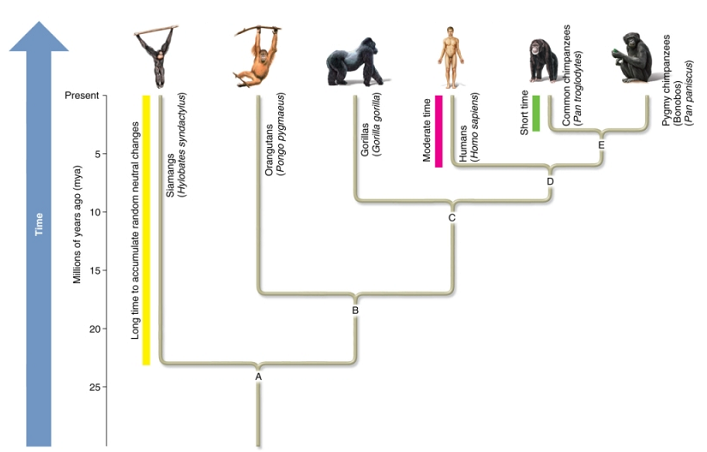Exposure to light redistributes auxin to the opposite side of the stem or root that is exposed to light. In stems, this redistribution of auxin results in the stem growing and bending toward the light
In contrast, roots bend away from the light as they grow. What may be an
advantage of the difference in bending of roots and stems?
A. When stems bend toward the light as they
grow, the leaves will shade the stem and
keep it from getting too hot.
B. When roots grow away from the light, they
will grow deeper into the soil where they can
absorb water and nutrients.
C. When roots grow away from the light, the
root cap will not be lost.
D. When roots grow away from the light, light
sensitive statoliths drive the bending of the
cells back to the ground.
B
You might also like to view...
Which pair of species would be expected to have fewer genetic differences: orangutans and gorillas or gorillas and humans? Why?

A. Gorillas and humans because their common ancestor (C) is more recent than that of orangutans and gorillas (B).
B. Gorillas and humans because their common ancestor (D) is more recent than that of orangutans and gorillas (C). C. Gorillas and orangutans because their common ancestor (B) is more ancient than that of humans and gorillas (C).
D. Gorillas and orangutans because their common ancestor (C) is more ancient than that of humans and gorillas (D).
The vascular bundles of eudicots separate the
ground tissue into two zones. Which of the following correctly describes the arrangement of these zones?
a. outermost xylem >>> phloem >>> pith >>> cortex b. outermost phloem >>> xylem >>> pith >>> cortex c. outermost cortex >>> phloem >>> xylem >>> pith d. outermost pith >>> phloem >>> xylem >>> cortex e. outermost cortex >>> xylem >>> phloem >>> pith
The ________ pathway is important in early nonspecific responses to infection because it occurs in the absence of antibodies.
A) cell-mediated B) alternative C) clonal selection D) classic E) humoral
A news article discussing the evolution of domestic dogs from wolves included this statement: "On its way from pack-hunting carnivore to fireside companion, dogs learned to love—or at least live on—wheat, rice, barley, corn, and potatoes." What is a
more scientifically accurate way to state what happened with dogs? A) Dogs' DNA mutated so that they could eat wheat, rice, barley, corn, and potatoes. B) Some wolves may have had variants in their digestion that allowed them to eat wheat, rice, barley, corn, and potatoes and so were able to survive with humans. C) Being around humans represented an advantage, so wolves were able to take advantage of that by changing their digestion to be able to eat wheat, rice, barley, corn, and potatoes. D) Dogs were created at the same time as wolves.